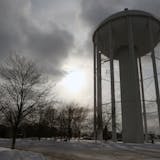Reforestation and cover cropping should be on the front lines of Minnesota's fight to reduce greenhouse gases and could cut up to one-fifth of the state's heat-trapping emissions.
The climate impacts of how Minnesotans manage and work the land is front and center in "Nature and Climate Solutions for Minnesota," a new report out Monday by the Nature Conservancy.
"It's the type of solution that our state needs right now and that we haven't yet capitalized on," said lead author Sachi Graber, climate policy associate at the organization's local chapter.
The 13 practices the study measures underscore the power of simple plant photosynthesis, which sucks carbon out of the atmosphere. A mature tree, for example, absorbs about 48 pounds of carbon dioxide a year.
While greenhouse gases from electricity generation continue to fall as utilities retire and replace coal plants with cleaner energy sources, Minnesota has failed to meaningfully cut global warming emissions in nearly every other sector.
Not only have lawmakers not met the reductions they promised in the 2007 Next Generation Energy Act, they've actually allowed emissions to increase in most sectors of the state's economy. Greenhouse gases coming from croplands and livestock have jumped by about 10% since the Legislature vowed to curb emissions. Emissions from industrial centers, homes, businesses and commercial centers have all increased over that time, too.
Greenhouse gases coming from vehicles and transportation trickled down between 2005 and 2010, but have stayed virtually flat since then, according to the latest data from the Minnesota Pollution Control Agency.
The state now has a Climate Change Subcabinet trying to nail down concrete action steps to meet the emission cuts the Legislature set.


